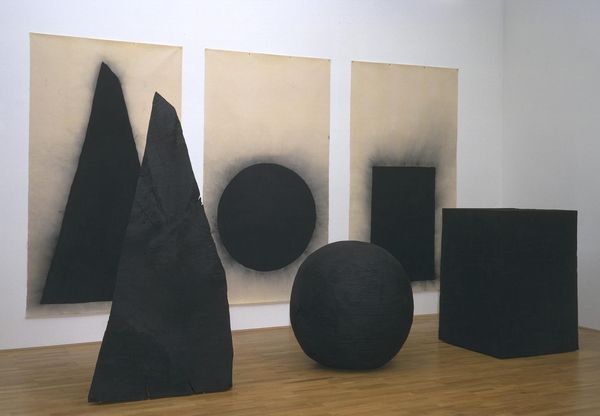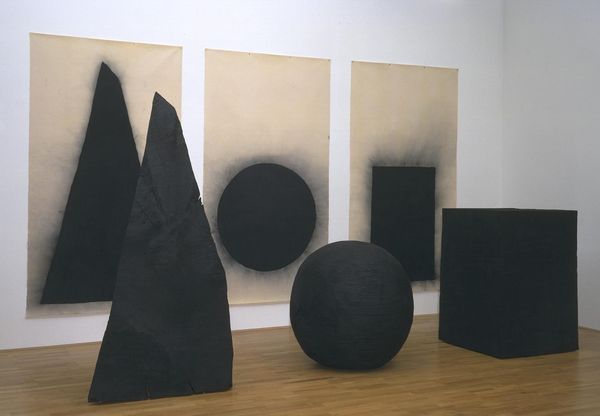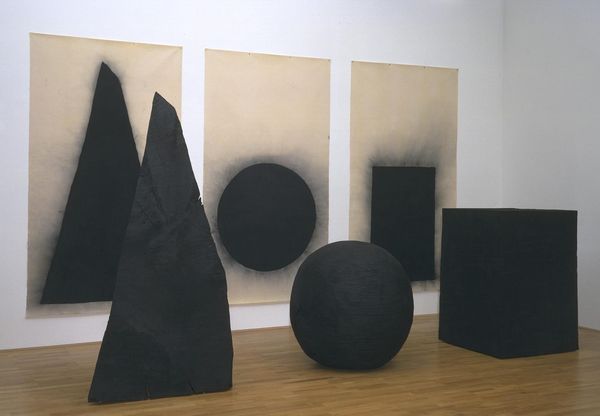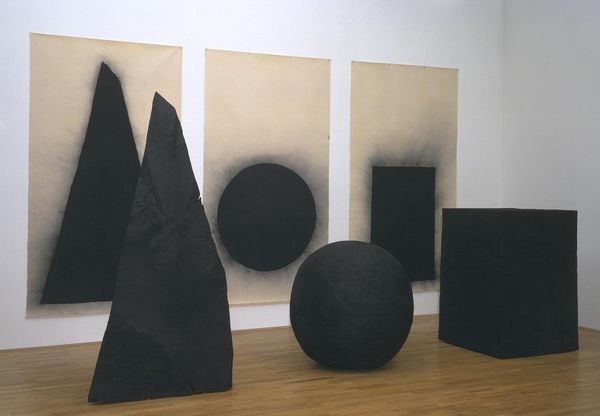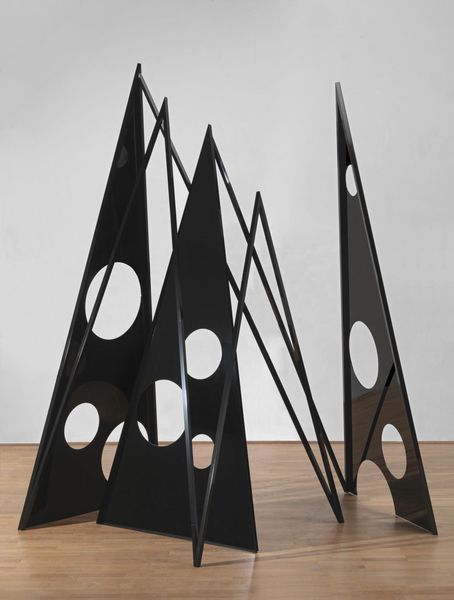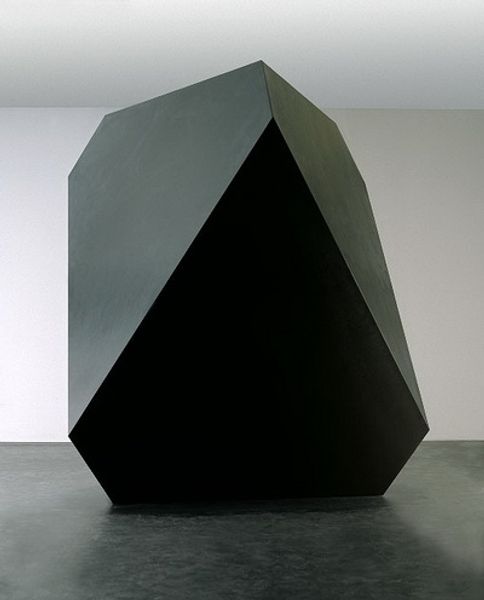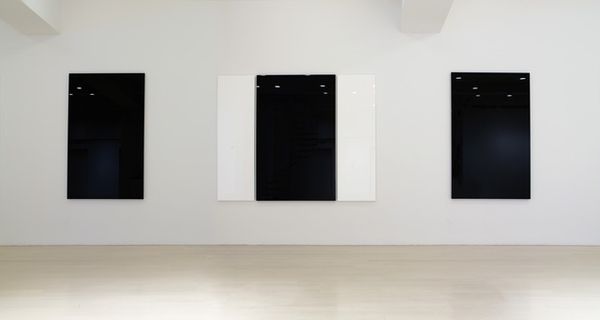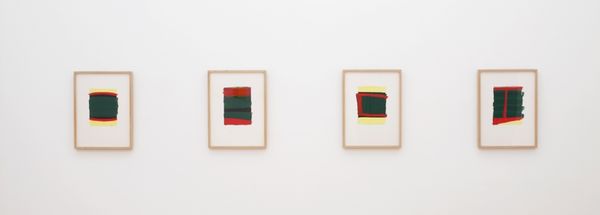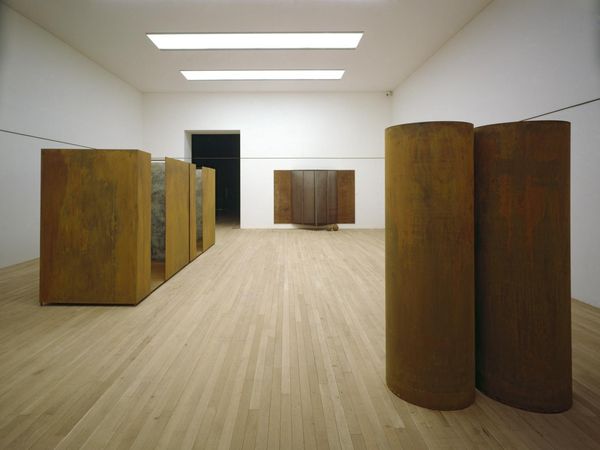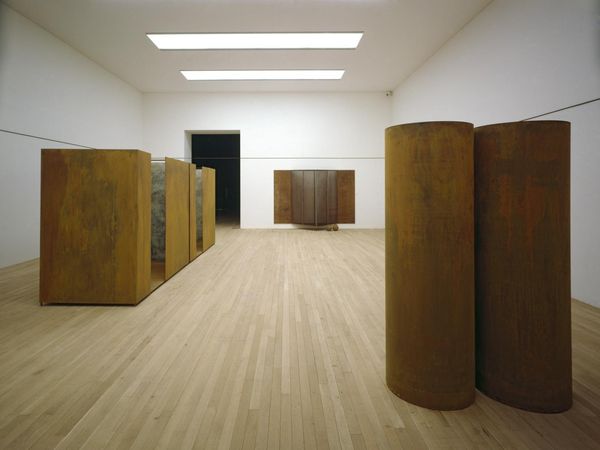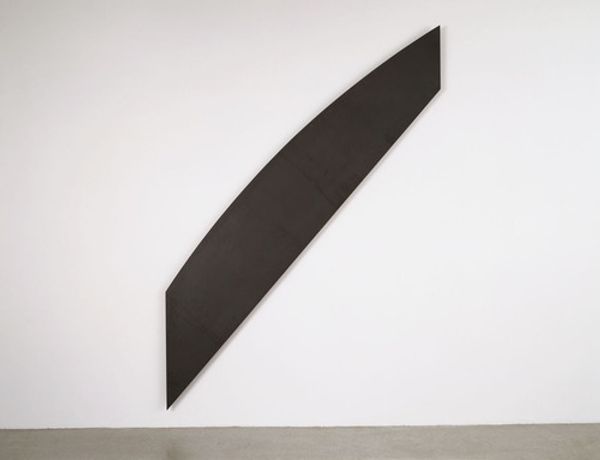
Dimensions: displayed: 3200 x 4500 x 3500 mm
Copyright: © David Nash | CC-BY-NC-ND 4.0 DEED, Photo: Tate
Curator: These pieces conjure such raw energy, they feel like the primal essence of form itself. Editor: Indeed. We are looking at David Nash's work here in the Tate collection. The dimensions are about 3.2 x 4.5 x 3.5 meters. This installation presents a study in geometric abstraction. Notice the interplay between the sculptures and the drawings behind them. Curator: Those shapes, that rough texture...it reminds me of charcoal sketches brought to life. Almost menacing in their simplicity. Editor: It's about Nash's engagement with materiality, the process of transforming raw materials into elemental shapes. Curator: I think there's something deeply spiritual in it. The transformation, almost alchemical. Editor: Perhaps, but I see primarily a commentary on industrial processes and the inherent tension between organic and manufactured forms. Curator: I suppose we both bring our biases to the viewing experience, which is the point, isn’t it? Editor: Absolutely! It highlights how art can spark such diverse interpretations.
Comments
Join the conversation
Join millions of artists and users on Artera today and experience the ultimate creative platform.
tate 7 months ago
⋮
Sphere is a large wooden sculpture by the British artist David Nash, the surface of which has been charred so that it is a deep, matt black. Although the work’s title refers to the shape of the sculpture, it is not completely spherical, but rather displays more organic lines in which irregularities in the shape of the wood are clearly visible. The wood grain can also be seen on all sides of the sculpture, beneath the striking black colour of its form. Sphere is one of the six elements that make up Nash’s installation Pyramid, Sphere, Cube 1997–8, which consists of two further sculptures – Pyramid (Tate T07539) and Cube (Tate T07541) – along with three charcoal drawings on canvas that depict opaque black pyramid, sphere and cube shapes at the same scale as the sculptures (see Pyramid, Tate T07542, Sphere, Tate T07543, and Cube, Tate T07544). The three drawings are displayed in a row on the gallery wall, with each appearing alongside its corresponding three-dimensional shape, which rests on the gallery floor in front of it. Although the spacing between the six elements of the installation depends on the dimensions of the room in which they are displayed, the drawings are usually positioned so that their lower edges are approximately 35 cm from the floor, and the spaces between the drawings can range between 5 cm and 30 cm, with the sculptures being centred on their corresponding drawing.
